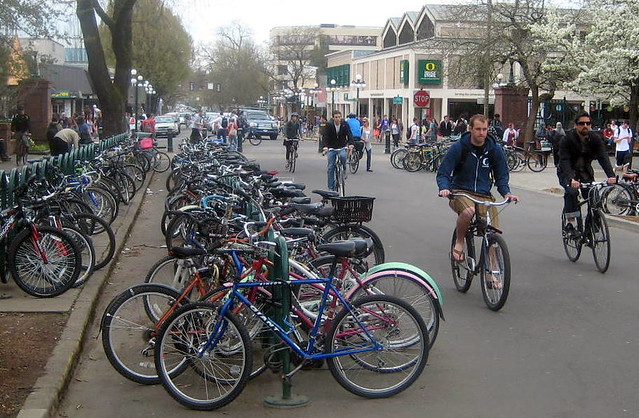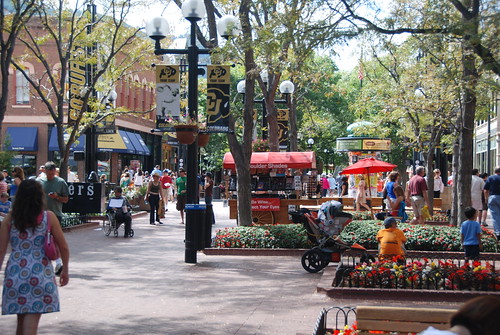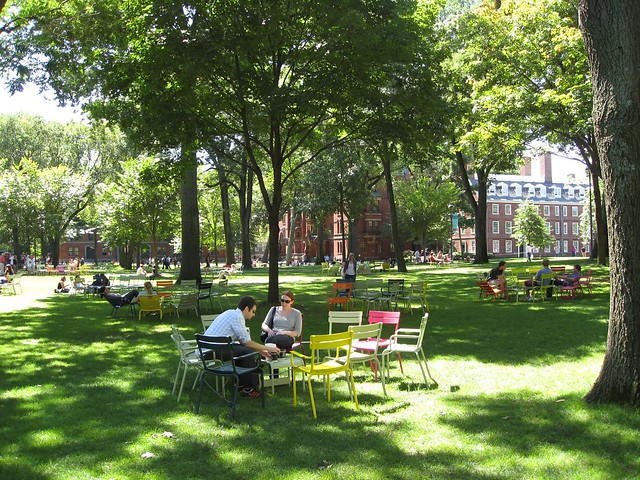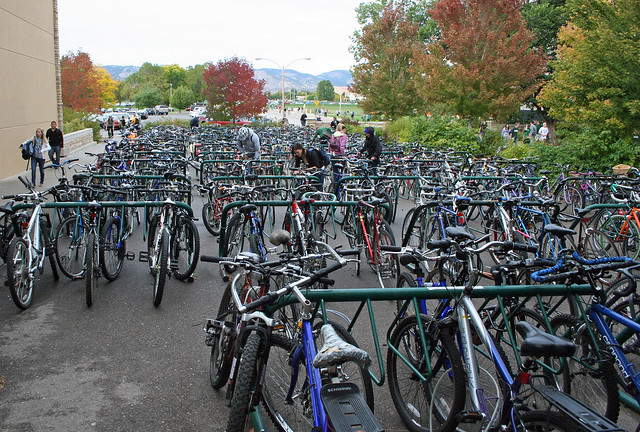You are not logged in.
- Topics: Active | Unanswered
#1 2013-12-01 09:02:37
- AusTexMurf
- Member
- From: South Austin
- Registered: 2008-11-21
- Posts: 439
4 Things U.S. College Towns Could Teach Planners About Biking
4 things U.S. college towns could teach planners about biking
Article Here
Posted by Michael Andersen (News Editor) on November 20th, 2013
The University of Oregon campus in Eugene.
(Photo by Gene Bisbee.)
Here's a secret you won't hear often: The United States has many cities where biking is far more popular than in Portland.
Two of them are just a two-day bike trip away.
They're called college towns. And it's time for urban planners to stop ignoring how well they work and start learning from them.
Here's a list of U.S. cities of 65,000 or more residents in which workers are likelier to commute by bike than Portlanders are:
Davis, Calif. - 19.1% of workers commute by bike
Boulder, Colo. - 12.1%
Palo Alto, Calif. - 9.5%
Eugene, Ore. - 8.7%
Cambridge, Mass - 8.5%
Fort Collins, Colo. - 7.9%
Berkeley, Calif. - 7.6%
Santa Barbara, Calif. - 6.9%
Madison, Wisc. - 6.3%
Missoula, Mont. - 6.2%
Portland's estimate, meanwhile, was at 6 percent for 2012, just ahead of Gainsville, Fla. Corvallis, Ore., which is home to Oregon State University and a bike commute mode share just short of 11 percent, would rank third nationally if it were large enough to make the 65,000 population cut.
The data comes from the U.S. Census, and it's part of a report published yesterday by the League of American Bicyclists.
http://bikeleague.org/sites/lab.huang.r … inal_2.pdf
The numbers don't include commuting to school. Census estimates measure work commutes only, though these totals do include students who also work day or night jobs and the thousands of people that the local universities employ.
Here's why colleges are terrific at encouraging biking, and what Portland and other cities should be learning from them:
Universities breed 20-minute neighborhoods.
Pearl Street
Pearl Street in Boulder.
(Photo by Let Ideas Compete)
You know those beautiful live-work areas that urban planners dream about and work endlessly to encourage, using sledgehammer-sized binders of regulation? Those Greenwich Village-style four-story walkups romanticized by Jane Jacobs in the early 1960s? That describes most traditional college campuses. The existence of these tightly planned communities, which engineeer biking and walking to be pleasant, safe and popular, explains why almost every university in the country also has a walkable commercial neighborhood within a few blocks of campus that becomes an attraction for the whole city. In other words, low-car life is contagious.
For cities, this means that one highly successful low-car neighborhood or development will beget another.
Universities create car-free spaces.
Harvard Lawn @ Cambridge
Harvard.
(Photo by Reinhard Schaffner)
If you've ever biked up SW Broadway past Portland State University, you've noticed it: students spilling into the bike lane or strutting across the street as if there's nobody there. That's not because PSU students and staff are jerks. It's because they just came from the car-free South Park Blocks, where they haven't been conditioned to fear for their physical safety every 200 feet. Spaces like this make it harder to get around a city by car — but thanks in part to bikes, people discover that they can get around just fine without one.
For cities, the lesson is that when dense, pleasant development is nearby, "blocking off" areas to cars doesn't shut areas down. It opens them up.
Universities use public spaces to enable density.
Enjoying the sun at the Terrace
Memorial Union Terrace in Madison.
(Photo by Windelbo.)
It's a virtuous cycle: The wide open space of college quads and plazas is only possible because students stack themselves like cordwood into dorms and off-campus housing — and students put up with high-density housing only because their environment is rich with other places to spend their time. If you've attended a college, you might remember your tiny bedroom but you probably also remember the pleasure of frequently running into friends by happenstance because everyone was spending time elsewhere. That's the sort of joy that bike-friendly cities create, and it's a benefit of density that it's hard to get your head around if you haven't spent much time recently in public spaces. For biking to be popular, you need proximity; for proximity to be pleasant, you need lots of public space.
For cities, the lesson is that great public placemaking isn't just icing on the cake of a well-functioning city. It's part of the recipe.
Universities charge for auto parking.
Sea of Bikes
An event at Colorado State University that couldn't exist without bicycles.
(Photo by Jeffrey Beall.)
Here's a list of the 10 largest schools located in the 10 cities we cited above, with the top annual price of an unrestricted faculty/staff surface parking permit at each:
UC Davis - $612
University of Colorado - $603
Stanford - $852
University of Oregon - $384
Harvard - $1,596
Colorado State University - $261
UC Berkeley - $1,488
UC Santa Barbara - $450
University of Wisconsin-Madison - $1,164
University of Montana - $185
For major employers in smaller cities, charging anything for parking at all is unusual — but not at universities. Is this because university presidents are environmental zealots on a crusade to decrease auto use? Of course not. It's because if universities offered auto parking free, people would bring cars to campus whether they needed to or not, and campuses would have to buy lots and lots of land to park them on. It'd also tear up the productive, interactive environment that facilitates education and community. It's not that universities ban auto transportation; it's just that they ask people who drive to pay its full cost themselves.
For cites, the lesson is that somehow, after 100 years of handing out free on-street real estate to auto owners, we need to figure out a way to stop. It's the original sin of our transportation system, and it's poisoning everything else we want to do with our land.
Too many urban policymakers dismiss college towns as completely different from "real" cities. It's especially strange since almost every one of them spent years of their own lives in schools just like these — highly productive car-lite communities sitting right under our noses.
Last edited by AusTexMurf (2013-12-01 09:04:00)
Offline
#2 2013-12-02 11:38:25
- Jack
- Member
- Registered: 2013-03-27
- Posts: 344
Re: 4 Things U.S. College Towns Could Teach Planners About Biking
What? All that spending on cycletracks is unnecessary?
Offline
- Registered users online in this topic: 0, guests: 1
- [Bot] ClaudeBot
[ Generated in 0.013 seconds, 9 queries executed - Memory usage: 539.96 KiB (Peak: 564.47 KiB) ]